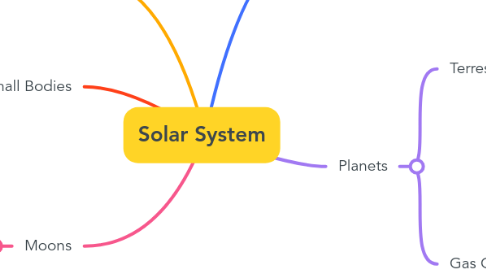Solar System
por Yan Ziqi


1. Dwarf Planets
1.1. Pluto, Ceres, Eris, etc.
2. Small Bodies
2.1. Asteroid Belt (between Mars and Jupiter)
2.2. Kuiper Belt (beyond Neptune, icy objects)
2.3. Oort Cloud (solar system’s edge, comet source)
3. Moons
3.1. Moon (Earth)
3.2. Europa (Jupiter, possible ocean)
3.3. Titan (Saturn, atmosphere + liquid methane)
4. Central Body
4.1. Sun (star, 99.86% of system mass)
5. Planets
5.1. Terrestrial Planets (close to the Sun)
5.1.1. Mercury (smallest, no atmosphere)
5.1.2. Venus (high temperatures, thick atmosphere)
5.1.3. Earth (only known life-hosting planet)
5.1.4. Mars (red planet, possible water)
5.2. Gas Giants (far from the Sun)
5.2.1. Jupiter (largest, strong magnetic field)
5.2.2. Saturn (iconic rings)
5.2.3. Uranus (tilted rotation axis)
5.2.4. Neptune (highest wind speeds)
